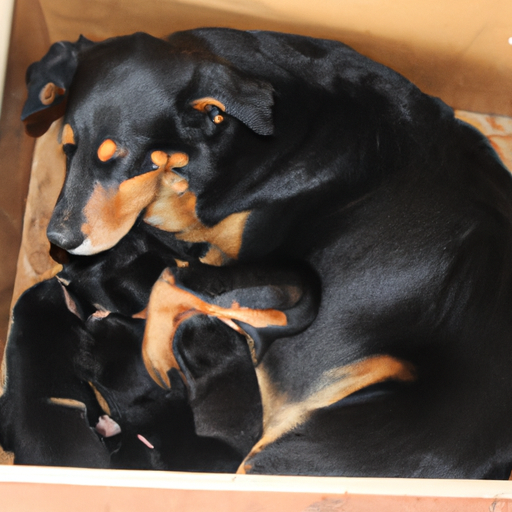What You Need to Know about Whelping
Whelping, also known as birthing or parturition, is the process through which a female dog gives birth to her puppies. As someone responsible for taking care of a pregnant dog, it’s important that you are well-prepared and informed about this process. This involves understanding the signs of impending labor, knowing what to expect during the birthing process, and being prepared for any complications that might arise.
The entire process can be intense and a bit overwhelming, especially if you’re new to this. But remember, your dog is counting on you for support, so breathe and stay calm. Let’s dive into the details!
Recognizing Signs of Impending Labor
Knowing when your dog is about to give birth is crucial. Here are some signs that labor is imminent:
- Nesting behaviour: Your dog may start to seek out a quiet and safe place to give birth. This behavior can start up to 48 hours before labor.
- Drop in body temperature: A notable drop in body temperature is a significant sign. Normal dog temperature is around 101-102.5°F; if it drops below 100°F, labor could start within 24 hours.
- Loss of appetite: Your dog may lose interest in food in the 24 hours before labor starts.
Understanding the Whelping Process
Whelping is divided into three stages:
- First Stage: The cervix relaxes and dilates, preparing for the birth of the puppies. Your dog may seem restless and may pant, shiver or vomit. This stage can last up to 36 hours.
- Second Stage: This is the actual birth of the puppies. You’ll notice contractions and your dog will push out the puppies, usually within an hour of starting this stage. Each puppy is delivered in a separate placenta.
- Third Stage: This is the expulsion of the placentas. It usually occurs immediately after each puppy is born, but can sometimes take longer.
Managing Potential Complications
Sometimes, complications can occur during whelping. These include:
- Dystocia: This is when the dog has difficulty giving birth. It can be due to large puppies, small birth canal, or weak contractions.
- Retained placenta: If a placenta is not expelled after each puppy, it can cause infection.
If you notice any signs of these complications, or if your dog seems excessively uncomfortable or in pain, contact your vet immediately.
Post-Whelping Care
After the puppies are born, it’s important to give your dog and her new litter a quiet and comfortable space. Monitor them closely for the first few days, making sure the puppies are nursing and that the mother is recovering well.
| Post-Whelping Care Tips |
|---|
| Ensure the puppies are warm |
| Check the mother’s milk supply |
| Monitor the mother for any signs of illness |
Frequently Asked Questions
1. How long does whelping last?
Whelping duration can vary. It may last from a few hours up to 24 hours.
2. How many puppies can a dog have?
The number of puppies a dog can have depends on the breed and size of the dog.
3. When should I call the vet during whelping?
Call the vet if your dog is in excessive pain, if she’s been having contractions for more than an hour without producing a puppy, or if more than two hours pass between puppies.
Remember, your role as a caregiver during the whelping process is crucial. Your dog relies on your help and support during this intense, but incredibly rewarding, experience.



